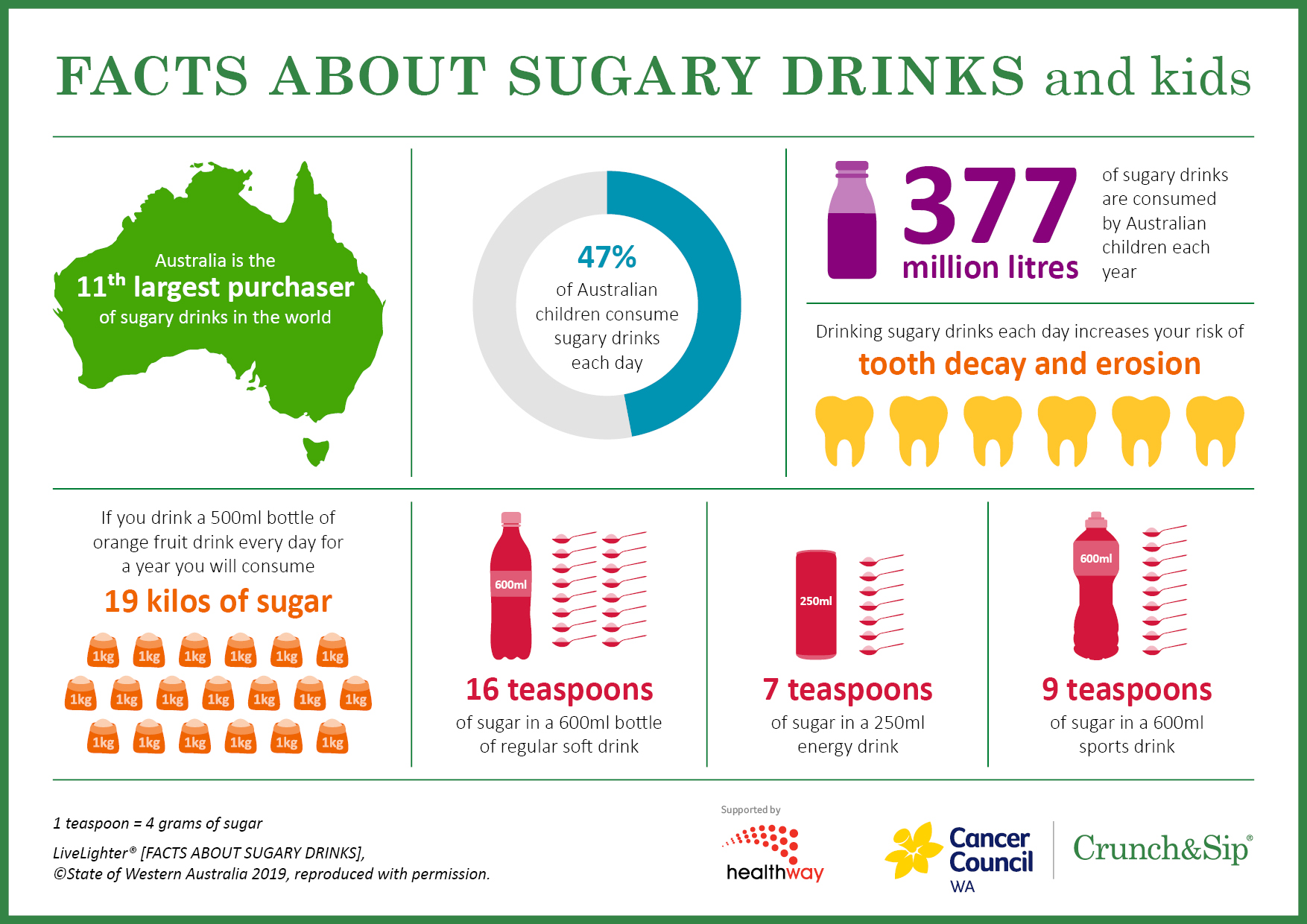Would you like water with that?

With approximately 47% of Australian children consuming sugary drinks every day, it’s time to start putting water back on the agenda.
Water is required for the digestion and absorption of nutrients, elimination of waste products from the body and to regulate body temperature. Tap water is free and readily available, quenches your thirst and has no kilojoules.
In comparison, sugary drinks are energy dense yet nutrient poor, this includes soft drinks, cordials, fruit drinks, energy drinks, iced tea and flavoured waters. With the growing consumption of sugary drinks amongst Australian children, these drinks are contributing to a substantial amount of energy in the diet.
The impact this is having on health during a critical period of development is concerning. Consuming sugary drinks regularly can lead to excess weight gain and associated chronic disease, as well as tooth decay and erosion.
The size of sugary drinks has increased 2 to 3 times in the last 50 years making it even easier to consume excess sugar. A 600ml bottle of sports drink has become a common purchase for children to rehydrate after sport, yet it contains around 9 teaspoons of sugar and nearly 1000 kilojoules. That’s roughly the same amount of energy as eating a chicken and salad sandwich. So, reaching for a sugary drink to wash down your food is the same as eating a second meal.
Whilst soft drinks are considered the worst offenders, parents should be aware of the high levels of sugar in other commonly purchased drinks such as juice, sports drinks and iced tea. Whilst these may be perceived as ‘healthier’ sugary drinks, they can be just as high in added sugars as the rest of them.
With school athletic carnivals just around the corner, it is important to remind families that plain water is the best option for hydration and performance and should be the drink of choice for children.

Discuss the infographic above with your class and share it with your school community. You can download a PDF of this infographic here.